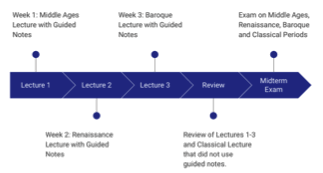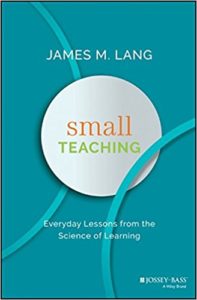Heather Mitchell, Associate Professor Psychology Webster University hmitchell33@webster.edu; Kim Kleinman, Director Undergraduate Advising Webster University kleinman@webster.edu; & Ronald Daniel, Director London Webster University ronalddaniel93@webster.edu
Background / Motivation
Metacognitive practices in advising have been documented (e.g., Freeman, 2008; Sullivan-Vance, 2008), and the literature is full of suggestions on how to support purposeful student engagements and learning outcomes through advising (e.g., Campbell & Nutt, 2008; Willcoxson & Wynder, 2010). For example, academic advising is a type of student learning, and we know metacognitive approaches are one best practice to improve such learning. By infusing academic advising with such metacognitive tools, we enhance intentional student engagement through the process of advising.
Why do I have to take this class? How is this requirement going to benefit me? When will I ever use this information again? Comments similar to these three questions led us to develop the advising syllabus and curriculum planner as tools to use in academic advising. Purposeful advising is a critical component of higher education as we prepare students to be responsible, global citizens in the 21st century. Additionally, metacognition can be an extremely useful tool in an effort to promote student achievement.
Nuts and Bolts / Method
This report provides a brief overview of two advising practices (i.e., advising syllabi and curriculum planners) we use to help deliver successful, engaging experiences for students. The advising syllabus and planner are both metacognitive in nature and thus can help each student and advisor remain intentional and reflective of the student’s college career. Webster University’s advising center and individual faculty in the college refine as needed the advising syllabus for use with students. Additionally, curriculum planners, or the “Planner”, originally developed at Virginia Tech University, provide a helpful organization tool for students to use while laying out their academic path in higher education. Students at Webster University’s Geneva, Switzerland campus and students at Webster’s St. Louis campus have benefitted from these tools.
Advising Syllabus. Such a syllabus includes an advising mission or statement/ philosophy of advising and allows advisors to outline any expectations and responsibilities for both students and advisors. See Appendix A: Undergraduate Advising Syllabus as an example. Learning outcomes and a timeline / calendar of advising events are key components of such a syllabus as well as a list of resources an advisee may find useful. Advising is an essential component of an educational mission, and an advising syllabus helps specify the importance of advising similar to the way course syllabi are a regular part of every student’s classroom education. Individual advisors, either professional advisors from the University’s Advising Center or individual faculty advisors personalize the specific criteria, descriptions, learning outcomes, and responsibilities for their advisees.
The Planner. Both paper and online versions of the Planner have been created. Computer science students at Virginia Teach developed the online version of the Planner as a way of “saving” the first draft of their holistic academic plan including curricular and extra-curricular components. Both an individual student and their advisor must provide the specific knowledge and details concerning career information, interests, and plans such as graduate school, technology competences, and language competences. Students now commonly use paper versions of the Planner, which requires crucial information such as student’s course and activity interests as well as details about the availability of those courses and/or activities. See Appendix B: Planner Template.
Specifically, the Planner provides students with an opportunity to “map out” their remaining time, requirements, and other activities so students can make the most of their college experience. Students are asked to review the requirements for obtaining their specific degree and they are provided with various resources (through web links and/or Advising Worksheets appropriate to their major) to use in order to create their Planner. To complete the Planner students must include the courses taken as well as those they plan to take in their academic career. In addition to coursework, students should include any other experiences relevant to their own professional development (e.g., volunteer opportunities, research involvement, study abroad, or internships). Use of the Planner is certainly varied (similar to use of the Advising Syllabus). Advisors encourage students to plan, monitor, and evaluate their academic and co-curricular progress with these planners. Students also should include on the Planner when they might begin to search for and apply to jobs, graduate programs, etc.
Outcomes / Lessons Learned
Formal investigations of these tools have not been conducted; however, anecdotal evidence suggests students and faculty have found these tools beneficial. For example, when reflecting on The Planner, one student commented in their course evaluation [the Planner] “is a great opportunity to identify, goals and get a really actionable plan in place to achieve it.” Students appear to benefit from these tools most when students are provided ample time to understand, create, and appropriately adjust the specific mechanisms of both tools. These tools are ideal when engaged as iterative experiences. Specifically, advisors first provide appropriate scaffolding to advisees by introducing these tools. Additionally, the metacognitive nature of both tools allows students to move beyond knowing and understanding their academic requirements to analyzing, evaluating, and creating their plan to meet such requirements. In other words, the tools reflect a change from the bottom, or lower level, Bloom’s taxonomy skills to the top, or higher level, skills. The level of specific metacognitive guidance each advisor provides advisees is also completely variable as neither of these tools are mandatory. Both tools simply provide a metacognitive lens for both advisors and students to view the advising process.
References
Campbell, S.M., & Nutt C.L. (2008). Academic advising in the new global century: Supporting student engagement and learning outcomes achievement. Peer Review, 10, 4-7.
Freeman, L.C. (2008). Establishing effective advising practices to influence student learning and success. Peer Review,10, 12-14.
Sullivan-Vance, K. (2008). Reenvisioning and revitalizing academic advising at Western Oregon University. Peer Review,10, 15-17.
Wilcoxson, L., & Wynder, M. (2010). The relationship between choice of major and career, experience of university and attrition. Australian Journal of Education, 54, 175-189.


